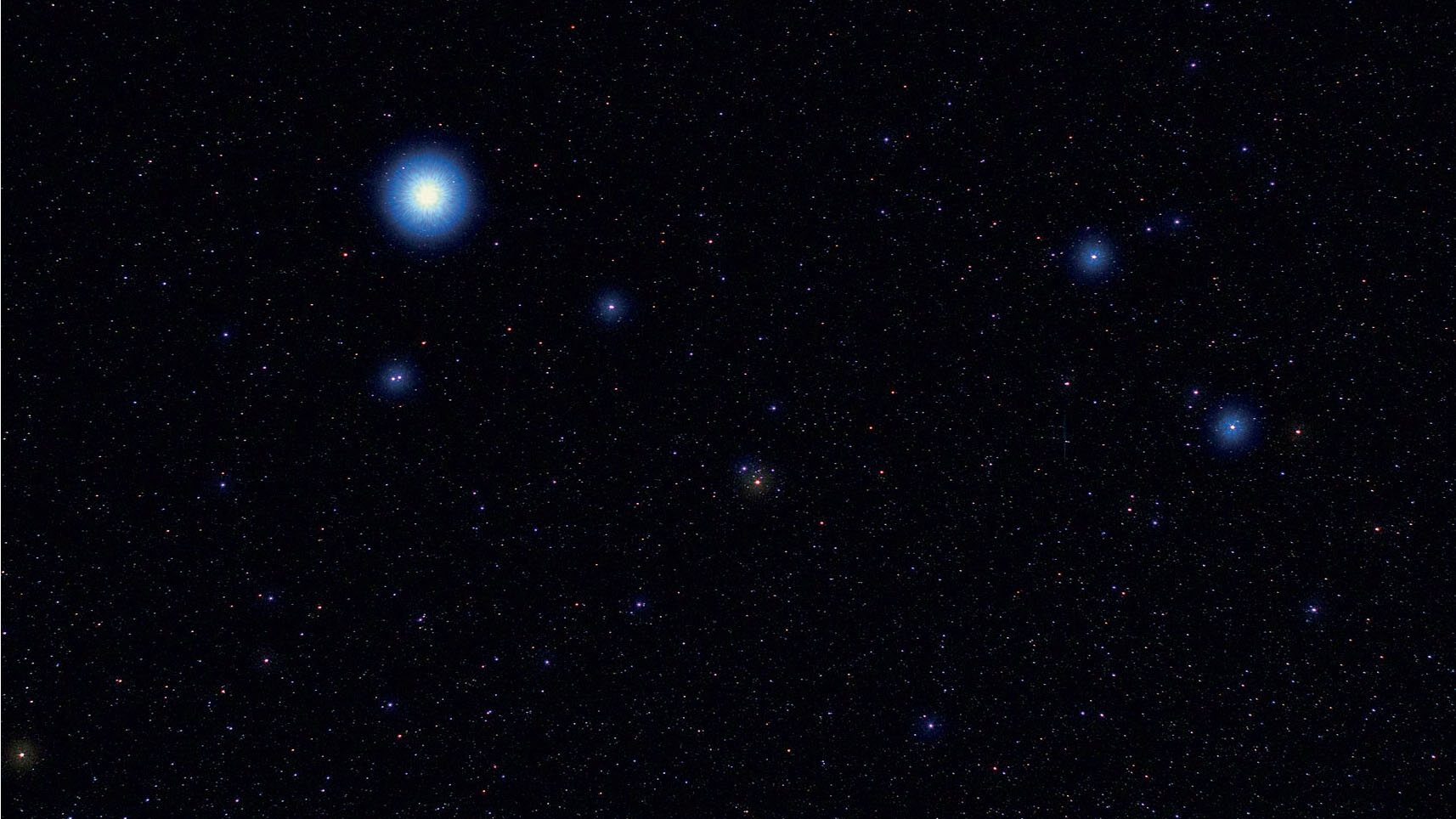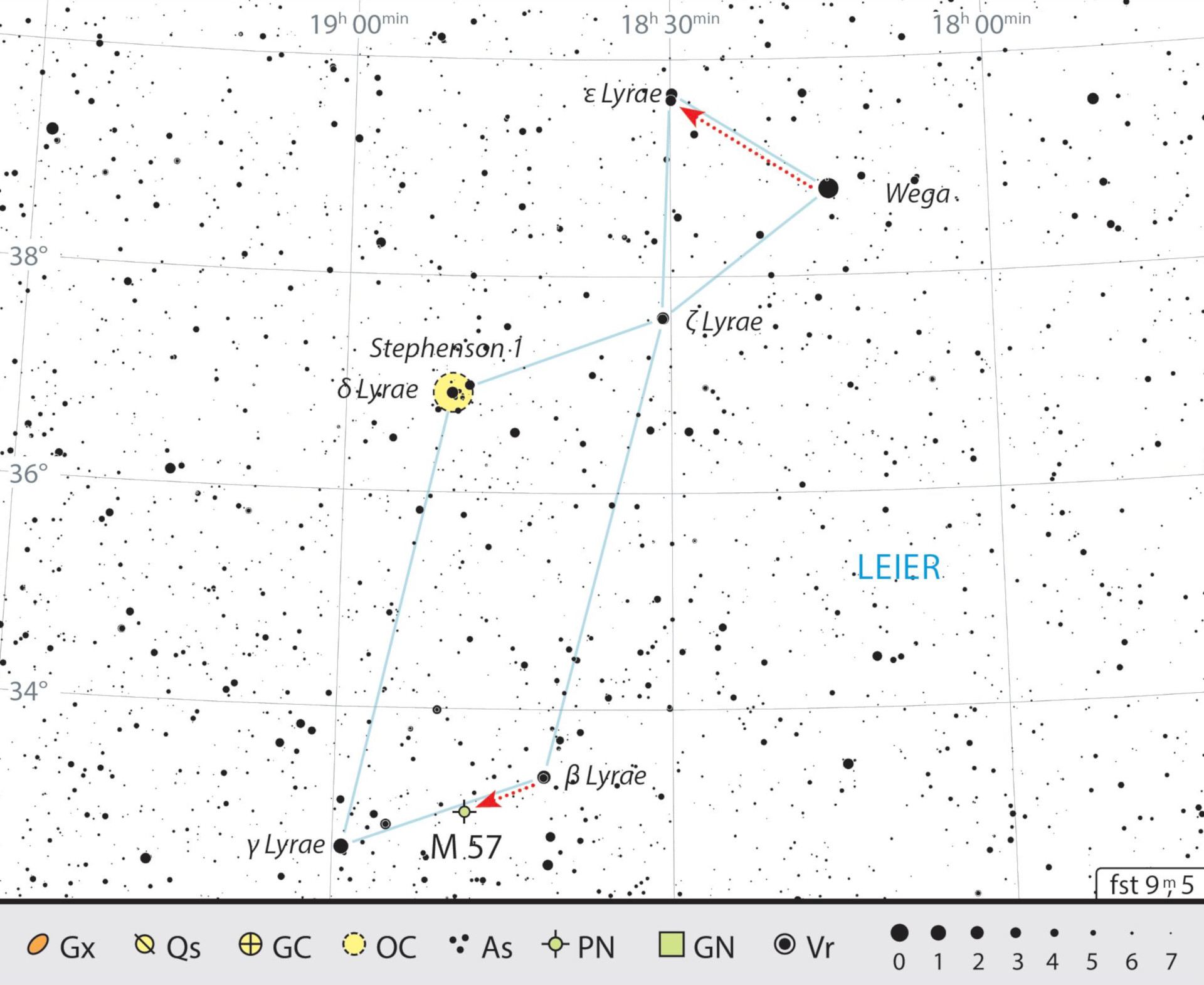Through the celestial parallelogram
The famous Ring Nebula actually needs a telescope, but for binoculars there are binary stars and a fine cluster.
 In the picture you can see some of the destinations on this tour of the constellation of Lyra. Marcus Degenkolbe / CCD Guide
In the picture you can see some of the destinations on this tour of the constellation of Lyra. Marcus Degenkolbe / CCD GuideThe constellation of Lyra does not occupy a large area of the night sky, but it's very prominent with its characteristic parallelogram shape and Vega, it’s brightest star.
Difficult beauties
Lyra’s best-known deep sky object, the Ring Nebula, Messier 57, can be found even with binoculars. But for this you’ll need a steady hand, only then can you identify it without any doubt: around two-thirds of the way from β to γ Lyrae, there is a slightly foggy, not very point-shaped object.
The Stephenson 1 cluster is much easier to find, because it is located close to δ Lyrae, a wide binary star whose components may appear yellow or blue in binoculars to those more colour-sensitive star fans. Many people may be disappointed at first glance: it appears that only a handful of stars almost randomly gather around the binary star. It is only on closer inspection that further, fainter members of the cluster appear. In total around a dozen may be visible with 10×50 binoculars, naturally depending on sky quality.
Everything in pairs?
There are a number of binary stars in Lyra that are accessible with binoculars. Firstly, the Double Double ε Lyrae 1.5° northeast of Vega. The main components can be resolved by sharp-eyed observers without optical aids, and everyone else will manage it with binoculars. Unfortunately, resolving the individual stars is only possible with 100 times magnification, thus far beyond the scope of binoculars.
But there is a worthwhile object nearby in ζ Lyr, the north-western star of the parallelogram. The only slightly fainter companion star is located 44" south of the main component. With steady hands, binoculars with 7 times magnification are sufficient to resolve the two. It is more convenient to use a tripod. You may lose a little independence, but you can make much better use of your optics’ potential. Otherwise, for example, you would miss the ability to separate the south-western star of the parallelogram β Lyr. The brighter star with magnitude 3.3 is visible with the naked eye alone. But the 46" distant magnitude 8.9 faint companion could hardly be detected without a tripod, since it would otherwise disappear due to unavoidable hand trembling during observation.
 The objects on this binoculars tour are easy to find thanks to the parallelogram shape of this constellation. J. Scholten
The objects on this binoculars tour are easy to find thanks to the parallelogram shape of this constellation. J. ScholtenAuthor: Kay Hempel / Licence: Oculum-Verlag GmbH
